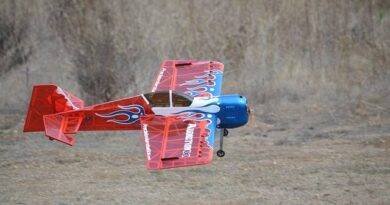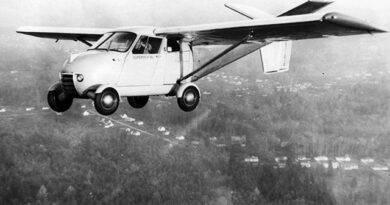Types of Airplane Wings
When it comes to designing aircraft, the wing type plays a crucial role in determining an airplane’s performance, efficiency, and maneuverability. From the classic straight wing to the innovative variable-sweep design, each wing type offers unique advantages suited to specific flight requirements. Understanding these variations is essential for aviation enthusiasts and professionals alike. In this guide, we’ll explore the different types of airplane wings, delving into their characteristics, uses, and the impact they have on modern aviation. Whether you’re a pilot or an aviation student, this comprehensive overview will enhance your understanding of aerodynamics and aircraft design.
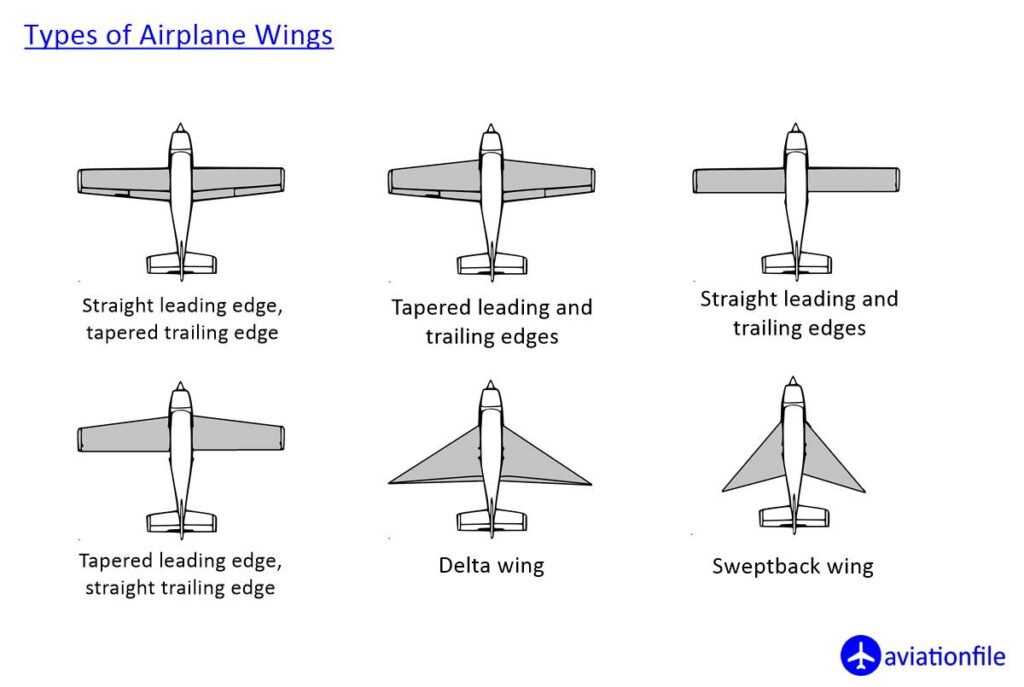
Straight wing: Also known as a rectangular wing, this type of wing is the simplest and most common design used in small airplanes. The straight wing has a constant chord (width) from root to tip, and its leading and trailing edges run parallel to each other. Straight wings provide excellent lift and stability, making them ideal for general aviation and training aircraft.
Swept wing: Swept wings are wings that are angled backward along the aircraft’s longitudinal axis. The angle of sweep varies from one aircraft to another, and it can be positive, negative, or zero. Swept wings reduce drag and increase speed by delaying the onset of supersonic shock waves. They are commonly used in military fighter jets and high-speed commercial airliners.
F16, Mirage, Concorde – Delta Wing
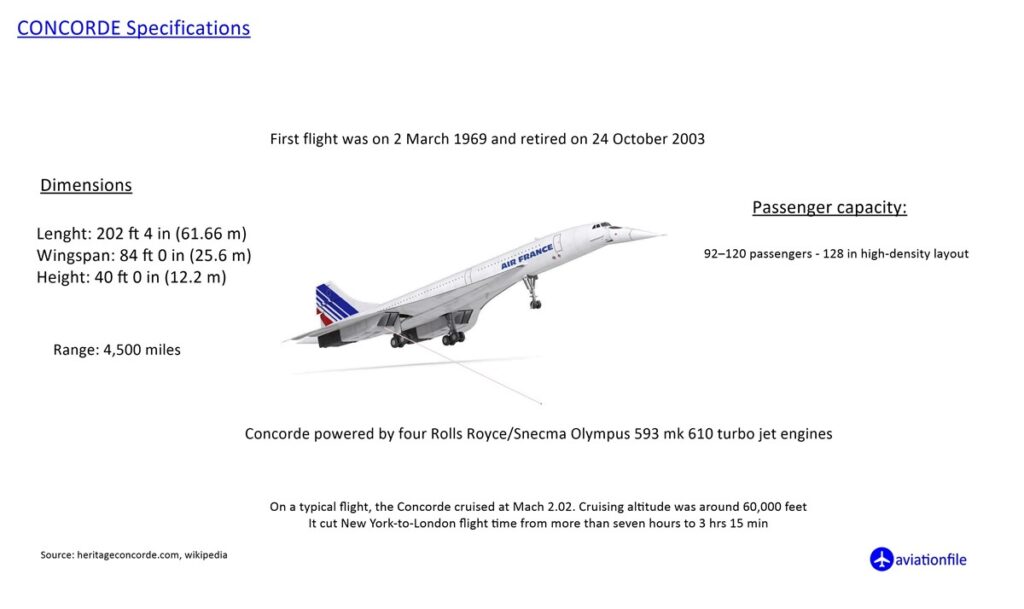
Delta wing: The delta wing is a highly swept wing that forms a triangle shape. Delta wings have a high lift-to-drag ratio and excellent maneuverability at low speeds. This design graces the wings of both military powerhouses like the Mirage and F-16, and supersonic pioneers like the Concorde.
Tapered wing: A tapered wing has a chord that gradually decreases from the root to the tip. This design reduces drag and increases lift distribution, making it ideal for high-speed aircraft. Commercial airliners like the Boeing 737 and the Airbus A320 frequently utilize tapered wings.
Elliptical wing: The elliptical wing has a rounded shape that reduces drag and improves lift distribution. The Supermarine Spitfire, a World War II fighter aircraft famed for its agility and speed, famously employed this design.
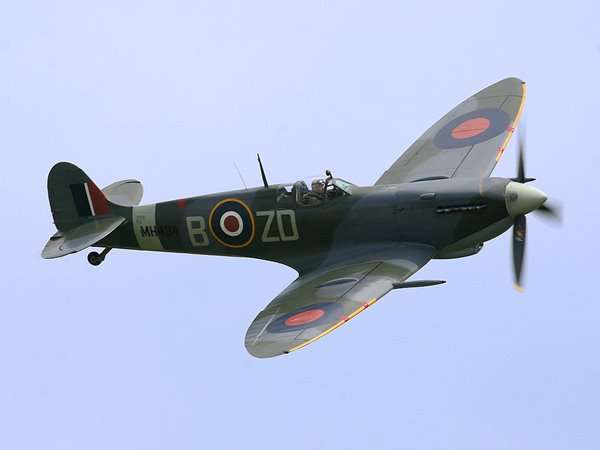
image source: wikipedia
Variable-sweep wing: Also known as a swing-wing, this type of wing can be swept back and forth to change the aircraft’s aerodynamic properties. Variable-sweep wings can provide high lift at low speeds and low drag at high speeds, making them ideal for supersonic aircraft such as the F-14 and the B-1B.
Each type of wing has its advantages and disadvantages, depending on the aircraft’s mission and design requirements. Pilots and engineers carefully consider the wing design when selecting an aircraft for a particular task.
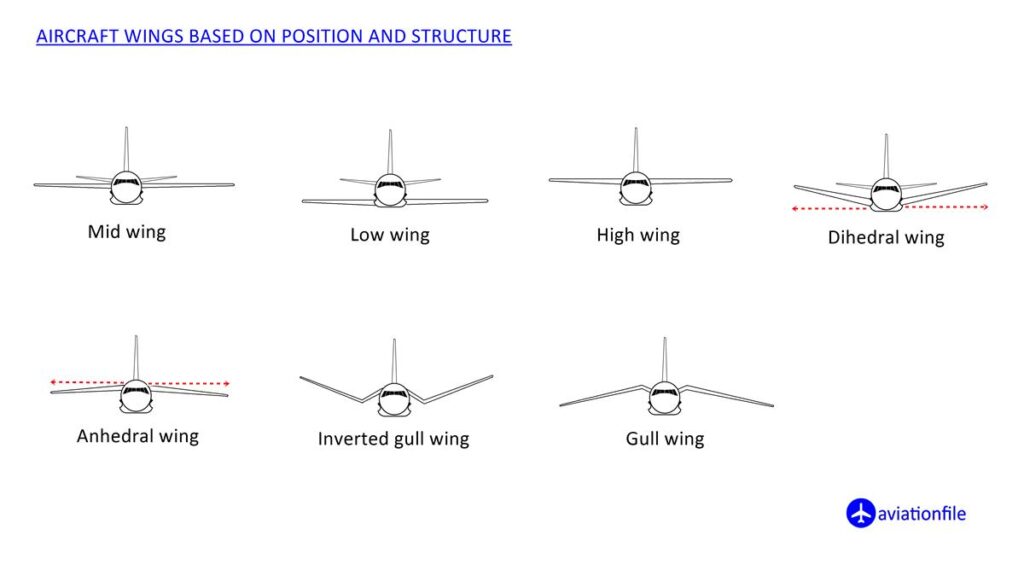
Inverted Gull Wing: Design, Benefits, and Challenges
The Inverted Gull Wing design is a distinct aerodynamic wing shape that was most notably used in WWII-era aircraft, such as the Vought F4U Corsair. This configuration features a downward curve near the fuselage, followed by an upward angle towards the wingtip, creating an inverted “V” shape when viewed from the front.
- Structural Advantages: The inverted gull wing offers several structural benefits, especially in terms of landing gear design and clearance. By lowering the wing root near the fuselage, engineers could incorporate shorter landing gear while achieving sufficient ground clearance for the propeller. In the F4U Corsair, this helped the aircraft accommodate a large propeller without requiring excessively long, heavy landing gear, which contributed to both reduced weight and increased structural integrity.
- Aerodynamic Benefits: The design also provides aerodynamic advantages by reducing interference drag at the wing-fuselage joint, improving airflow around the aircraft. This design enhances lift distribution across the wingspan and minimizes drag, contributing to the aircraft’s stability at high speeds and during maneuvering. These characteristics were particularly valuable in military applications, where agility and fuel efficiency were crucial.
- Challenges of the Inverted Gull Wing: Despite its advantages, the inverted gull wing design comes with notable challenges. One primary drawback is its complex structural requirements, which can increase manufacturing complexity and costs. The unique angles and joints require precise engineering to handle stress distribution effectively, making it a less suitable choice for mass production in civilian aircraft. Additionally, this design can create maintenance difficulties, as the structural intricacies may require more frequent inspections and specialized repairs, leading to higher maintenance costs over time.
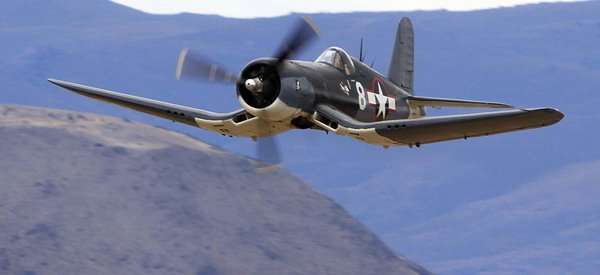
Conclusion: The Role of Wing Design in Modern Aviation
In conclusion, the design of an airplane’s wings is a fundamental aspect of aviation that directly influences flight performance, efficiency, and handling. Whether it’s the agility provided by swept wings or the lift efficiency of elliptical wings, each type is tailored to specific flight conditions and missions. By understanding these differences, aviation professionals can make informed decisions in aircraft design and operation. As technology advances, wing designs will continue to evolve, driving innovation in the aerospace industry.
References:
“Airplane Wing Design.” Aerospace Engineering Blog, 15 Oct. 2013, aerospaceengineeringblog.com/aircraft-wing-design/.
“Types of Aircraft Wings.” Aircraft Compare, 17 June 2021, aircraftcompare.com/types-of-aircraft-wings/.
- Straight Wing: https://www.quora.com/Aircraft-Design-What-is-the-difference-between-forward-swept-wings-and-aft-swept-wings
- Swept Wing: https://www.quora.com/Aircraft-Design-What-is-the-difference-between-forward-swept-wings-and-aft-swept-wings
- Delta Wing: https://www.quora.com/What-are-the-differences-between-delta-wings-and-traditional-swept-wings
- High Wing: https://en.wikipedia.org/wiki/Wing_configuration
- Dihedral Wing: https://en.wikipedia.org/wiki/Dihedral_%28aeronautics%29
- Gull Wing: https://en.wikipedia.org/wiki/VTOL
